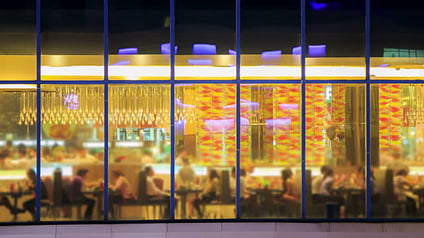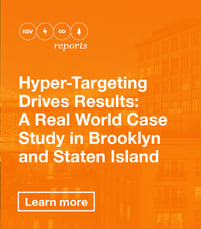One of the big pieces of the KSV approach is our connection to the voice of the customer, and trying to keep a pulse on the priorities, challenges, and realities that they face.

In fact, we often say to clients and prospects that while so many firms out there do "research", so few seem to really understand the reality of what customers are facing.

So we hit the streets to talk to real customers, real people who use energy and hear from them how it fits into their everyday lives, and how it doesn't.
So this week, while we're celebrating along with all of our MA clients the release of the ACEEE ranking that keeps MA on top (sharing the #1 spot for energy efficiency in the nation with CA), we're also talking to a small business owner in MA about the realities of how his business deals with energy management.
Because the truth about market transformation, about truly shifting the way people think about and deal with energy, is a complicated and nuanced process.
@ashKSV: Steve, thanks for talking to me about energy and your businesses today.
@Steve: My pleasure.
@ashKSV: So Steve, you own two small businesses in Salem, MA.
@Steve: That's right. We own two restaurants, a pizza place and also a European style cafe, sort of a daytime coffee and sandwiches and nighttime beer and live music place.
@ashKSV: And you've been running two successful restaurants for over a decade. Why do you think they've been so successful?
@Steve: Right concept. Right place. Right time.
@ashKSV: And can you describe what success feels like for you now?
@Steve: Well, I feel much more relaxed nowadays. I'm not checking sales every minute of every day, but I also know that things could turn on a dime. In fact, just a couple years ago, when the crazy snowstorms happened in MA, we had an incredibly tough time. No one left their houses, and we were dead. We were wrecked for weeks, and it took us months and months to recover, financially. It was very hard. And so while I feel relaxed, I also know how quickly things can change.
@ashKSV: What would you say your biggest priorities are, as an owner of multiple businesses? You don't manage day to day things, so what's on your mind?
@Steve: Payroll. Waste. Sales. Staffing. And what's my next move, what's the next growth opportunity.
@ashKSV: Do you pay all the bills yourself for the businesses?
@Steve: Yeah, I use accounting software and manage it all from my iPhone.
@ashKSV: And do you notice when the energy bills fluctuate?
@Steve: Not really. I mean I would notice if it swung by like, $800, but not really.
@ashKSV: And do you think about energy efficiency for the businesses? You mentioned waste, but I'm assuming you meant food waste?
@Steve: Sure. We put in automatic lighting in the offices and some spots around the restaurant, the bathrooms. We've made an effort to try to make sure that we're as efficient as possible. I installed Nest thermostats to try to keep an eye on what's happening when I'm not there. The staff gets moving so fast and the equipment gets warm, so it will be the middle of the winter and the staff will turn the AC on. They just don't think about it. They'll turn on the AC to 55 degrees and they'll leave it on all night. It got to the point where I had to take the mechanism and turn it on and off and then hide it to try and keep things under control.
@ashKSV: Have you ever reached out to your utility for help or advice?
@Steve: We actually met with someone from our utility about two years ago, they had a couple of suggestions. The one thing we did take them up on was moving to higher efficiency lighting and installing some high efficiency bulbs. But the problem is, our spaces really rely on ambience, and it was really hard to get the high efficiency ones to have the right dimming quality, so it just didn't work for our space. And on top of that, it didn't save us any real money. I didn't see any difference, except a less comfortable space.
They also wanted us to manipulate our walk-in cooler so it wouldn't be running as often, but when we talked to our HVAC guy, he advised that the machine lifespan would be shortened by the recommendation. He said, "better to spend a little more energy now, then to have to replace this $10k piece of equipment."
@ashKSV: So for you, you feel you've done what you can do, and you have other priorities.
@Steve: Yeah, I mean I wish I could shrink the bill. But I'm afraid... it would be one thing if I owned the building and owned the space. I'd revisit how all the electrical was laid out. You know, we grew so much so quickly, and every time we changed the menu we'd have to add equipment, so we've redone the electrical like 3 or 4 times, but not from scratch, it's been Frankensteined. So if I owned the building, and I had the money, I'd probably build it from scratch. But that's not a priority for me right now. Or not the biggest priority.
So this is the reality of our market transformation efforts. A hopeful, driven decision maker, who has tried to do the right thing but gotten confusing and conflicting advice from their utility representative and their trusted trade allies. And openness to doing more, but only if it fits into their priorities, works with their realities.
This is the reality we are working with. In order to break through, we'll need to be helpful, add value, be there at the right moment (like probably not right after a major snowstorm. Or maybe RIGHT after a major snowstorm), and be relevant.
We have to do this across multiple audiences (trade allies, utility reps, building owners, tenants ) to get the market forces aligned.
In other words: context; creative, value added content; and connections.

